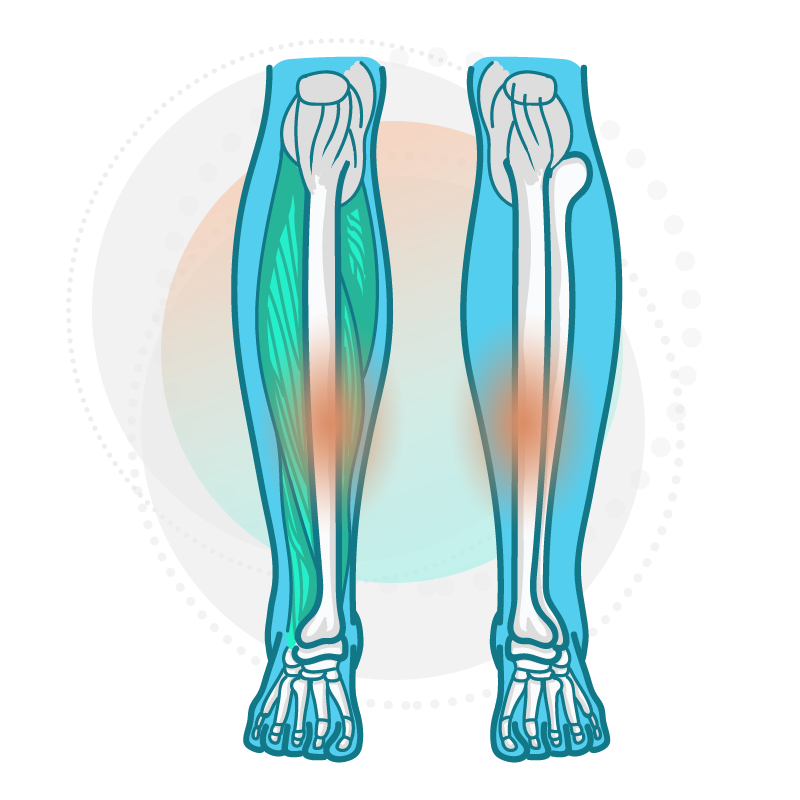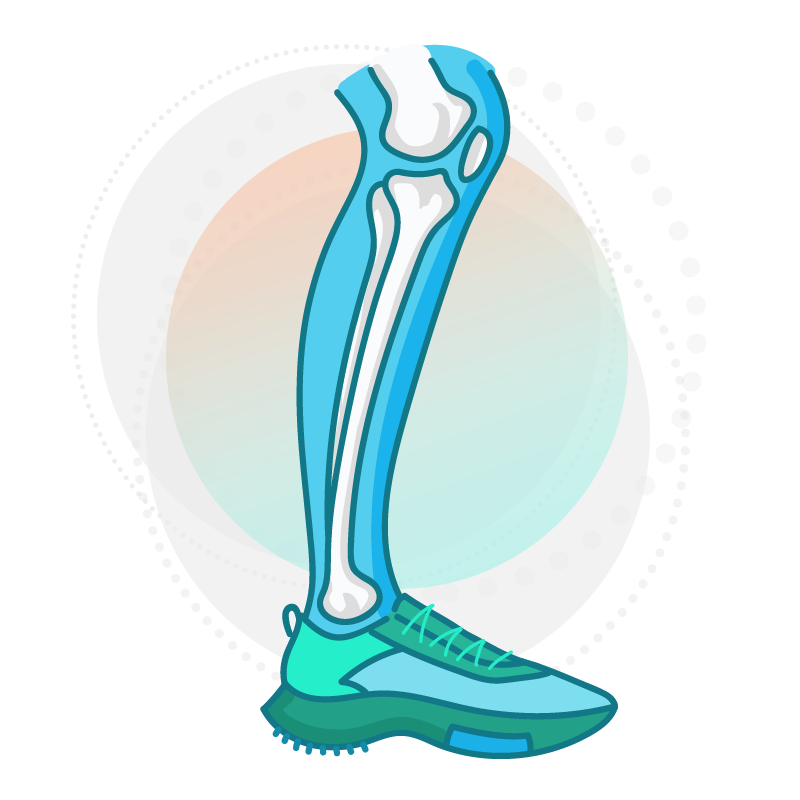Now Available: Shin Splints Rehab Protocol!
What are
Shin Splints?
A term applied to a number of overuse injuries characterized by a dull aching pain felt on the inner or outer surface of the shin bone (tibia) and brought on by exercise. […] The symptoms stop when activity ceases, but the leg usually remains tender to the touch.
– The Oxford Dictionary of Sports & Medicine

UNMANAGED GROUND FORCE
How are shin splints caused?
A person develops shin splints because they are unable to manage the force they put into the ground. Whether the force itself was too great or the volume was too great over time, the human body failed to manage/mitigate the force of impact into the ground. This causes stress within the shin/ankle region, which can then lead to injuries to the bone, tissues, muscles, or ligaments. These injuries – and the associated pains – are often referred to as “shin splints”.


COMMON CAUSES
What are common activities that lead to shin splints?
Any activity that places unmanaged stress on your shins/ankles will likely result in shin splints eventually. The most common activities leading to shin splints for atheletes of all levels are:
- Running/Sprinting
- Jumping
- High Impact Sports (football, volleyball, basketball, etc.)
- Weighted Movement (rucking/backpacking, etc.)
And many more. Being overweight and simply walking fast and long enough can lead to shin splints.
UNMANAGED GROUND FORCE
Why do YOU have shin splints?
TOO MUCH VOLUME
Too much activity too quickly will wear you out. Your body can only take so much stress at the start.
TOO MUCH FORCE
Heavier and harder impacts will also wear you out quickly. Your body needs to scale up to heavier weights and harder impacts.
POOR MOVEMENT
Even if you start off slow giving your body time to adapt to heavier weights, it won’t matter if you don’t move properly.
POOR EQUIPMENT
Improper footwear can change the way your foot impacts the ground. Poor fitting, worn out, no support, instable or imbalanced and tight shoes/clothing reduce your ability to manage ground contact.
FATIGUE
Over time your muscles, bones, tissues, ligaments, etc, will weaken if you do not properly rest and heal. Once they fatigue to a certain point, they no longer function properly, protecting you from each impact.
RELATED ISSUES
Going beyond just “shin splints”.
Now that you have an idea of what causes shin splints, it’s time to determine exactly what your shin splints might actually be. As mentioned in the definition above, “shin splints” is often the go-to term for any kind of pain between the knee and ankle joints. This is especially true when the activity that is believed to have caused it is a high-impact sport – especially running.
However, there can be a large number of things going on, some of which require special treatment and extensive rest compared to “just shin splints”

MORE THAN SHIN SPLINTS
Serious issues hiding behind “shin splints”.
Compartment Syndrome
A condition where the fascia is too tight around the muscles/nerves/vascular system causing immense pressure.
Peroneal Tendinitis
Inflamation on the outside of the ankle of the peroneal tendon causing pain and discomfort.

Disease or Illness
Cancer, bone maladies, and other medical issues causing pain when disturbed.
Stress Fractures (tibia/fibula)
A microscopic break in your tibia or fibula generally caused by overuse.
Medial Tibial Stress Syndrome
Inflammation of the periostitis (a layer of connective tissue around the bone).
Start your healing process today.
This is an informational website. This is not a replacement for proper medical care and attention by a registered physician. Please contact a sports medicine doctor or qualified physiotherapist in your area to undergo proper testing and treatment protocols for your specific issues.
